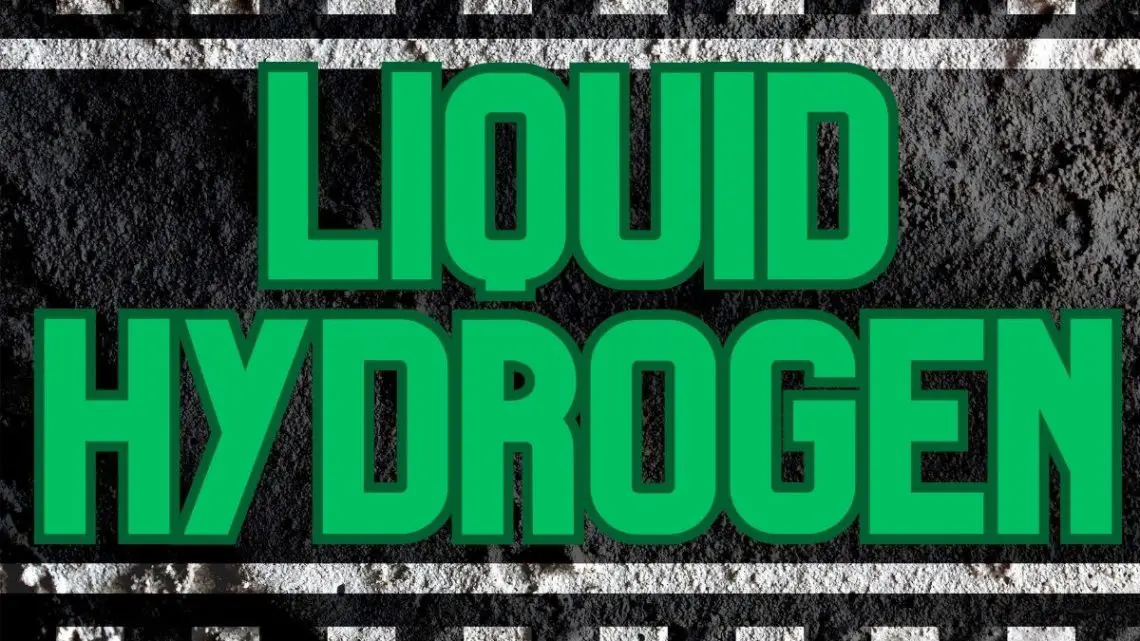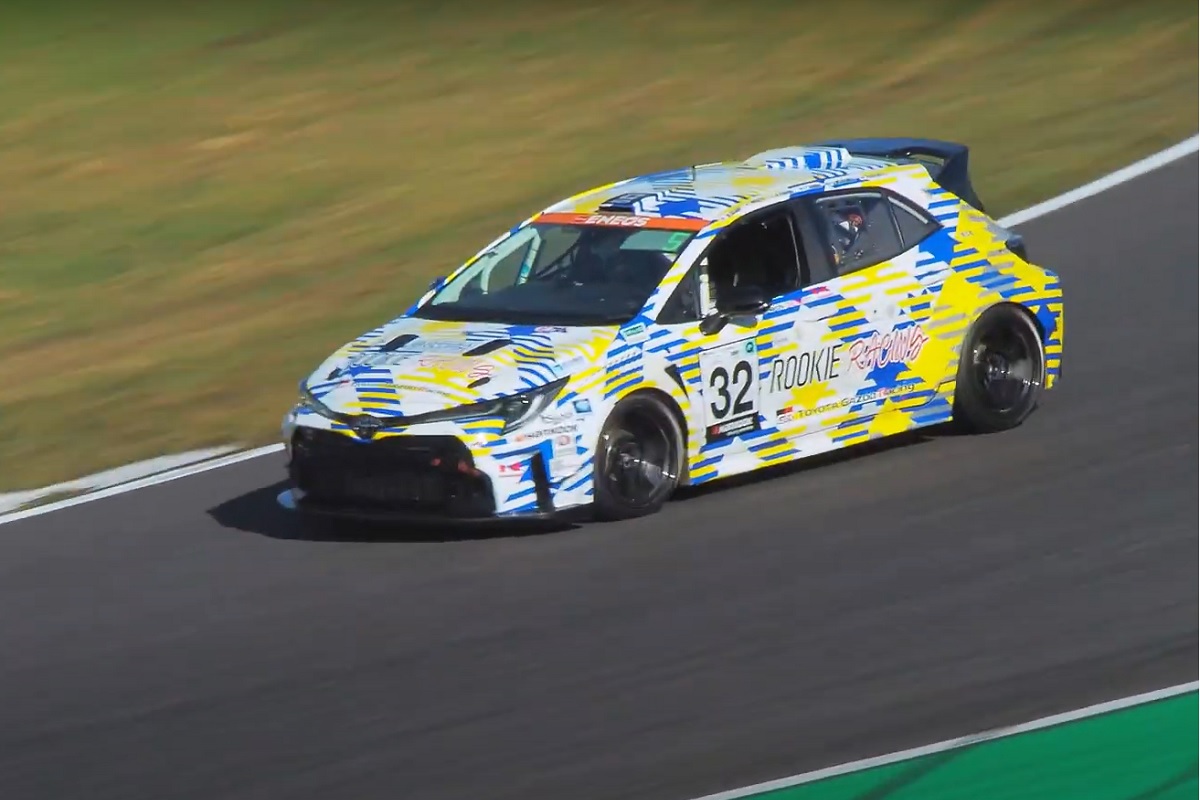
Unleashing the Power: Liquid Hydrogen Fuels Debut Race Car
June 3, 2023The H2-powered Toyota Corolla has completed a 24-hour race at the Fuji International Speedway
Toyota brought its liquid hydrogen fueled Corolla to the Fuji International Speedway in Oyama, Shizuoka Prefecture in Japan, representing the first time a race car in any race worldwide has been powered by liquified H2.
Toyota is using the race car to learn more about its operation than is available through research.
The liquid Toyota hydrogen engine Corolla model that completed the 24-hour race, providing the automaker with invaluable data. The extreme conditions provided by racing offer the automaker insight into issues that can occur with the vehicle that aren’t possible in conventional research. The goal of this use of the race car is to learn enough to accelerate commercial sale development.
Toyota has already entered races using H2-powered Corollas. That said, those cars were powered by the fuel in its gas form. This began in May 2021. That said, by switching from gas to liquified H2, there is greater energy density within the same fuel tank volume. This one change doubled the vehicle’s range.
Toyota hopes to use what it learns about liquid hydrogen cars to broaden decarbonization options.
“The potential for engine-based decarbonization will expand,” said Toyota President Koji Sato at a recent media conference. “There are still many challenges for mass production, but breakthroughs can be found in the field.”

The race car used a hydrogen internal combustion engine (ICE) not unsimilar to the configuration of vehicles with gasoline-powered engines. This is unlike the fuel cells that power the Mirai and other H2 gas-powered vehicles. 
Fuel cell vehicles run on electricity generated using H2. With an ICE design, the car uses many parts and technologies common in gasoline ICE vehicles, only they are fueled by H2 instead.
Liquid hydrogen challenges
Among the primary challenges of working with liquid hydrogen is that the fuel has to be kept colder than -253ºC. This requires additional technology for the fuel pumps as well as other components.
Toyota had intended to make a race in March the first time it used this race car. However, an engine room fire during a test run meant that the vehicle had to be withdrawn close to the last minute. The automaker used that experience to make modifications to the vehicle, which made it possible to participate in this most recent race.

FAQ’S Toyota Hydrogen Corolla
Q1: What is the significance of the H2-powered Toyota Corolla completing a 24-hour race at Fuji International Speedway?
A1: The significance of the H2-powered Toyota Corolla completing a 24-hour race at Fuji International Speedway lies in showcasing the potential and viability of hydrogen-powered vehicles in endurance racing. It demonstrates the performance and durability of a hydrogen-fueled car, paving the way for future advancements in hydrogen technology.
Q2: How does Toyota benefit from using a hydrogen-powered race car?
A2: Toyota benefits from using a hydrogen-powered race car by gaining valuable insights and data on the performance, efficiency, and reliability of hydrogen fuel cell technology. It allows them to further develop and refine their hydrogen-powered vehicles for both racing and commercial applications.
Q3: What distinguishes the liquid hydrogen engine Corolla model used in the race from previous versions?
A3: The liquid hydrogen engine Corolla model used in the race differs from previous versions by utilizing a liquid hydrogen fuel system instead of compressed gaseous hydrogen. This technology allows for higher energy density, resulting in improved fuel efficiency and longer driving range.
Q4: How does the use of liquefied H2 instead of gas impact the vehicle’s range?
A4: The use of liquefied hydrogen instead of gas significantly impacts the vehicle’s range by increasing it. Liquefied hydrogen offers a higher energy density compared to compressed gaseous hydrogen, allowing for more efficient storage and longer driving distances before refueling is required.
Q5: What are Toyota’s goals in using liquid hydrogen cars and decarbonization?
A5: Toyota’s goals in using liquid hydrogen cars align with their commitment to decarbonization. By promoting the use of hydrogen fuel, they aim to reduce greenhouse gas emissions, minimize dependence on fossil fuels, and contribute to a cleaner and more sustainable transportation industry.
Q6: How does the hydrogen internal combustion engine (ICE) in the race car differ from fuel cells used in other H2-powered vehicles?
A6: The hydrogen internal combustion engine (ICE) in the race car differs from fuel cells used in other H2-powered vehicles by directly combusting hydrogen with oxygen to produce energy. In contrast, fuel cells generate electricity through an electrochemical process. The ICE technology provides a different approach to harnessing the power of hydrogen for propulsion.
Q7: What are the challenges associated with working with liquid hydrogen as a fuel?
A7: Working with liquid hydrogen as a fuel presents challenges related to its storage and transportation. Liquid hydrogen requires extremely low temperatures (-253°C) to remain in liquid form, necessitating specialized infrastructure and handling procedures. Additionally, ensuring the safety and preventing leaks pose technical and logistical challenges.
Q8: Why was the initial race in March postponed, and how did Toyota address the issue?
A8: The initial race in March was postponed due to technical difficulties encountered during the development of the hydrogen system. Toyota addressed the issue by making modifications and improvements to the vehicle’s hydrogen fuel system to ensure its reliability and safety before participating in the race.
Q9: What modifications were made to the vehicle to enable its participation in the recent race?
A9: To enable its participation in the recent race, the vehicle underwent modifications to enhance the performance and reliability of its hydrogen fuel system. These modifications included improving the durability of hydrogen storage tanks, optimizing the fuel delivery system, and ensuring the efficient utilization of hydrogen as a fuel source.
Ready to test your knowledge on the most abundant element in the universe? Take our fun and engaging Hydrogen Quiz now!




 HFN News is your leading source for fresh hydrogen and renewable energy updates. Amid the fast-paced growth of hydrogen companies, we provide top-notch news and insights about this exciting sector. Our coverage spans from hydrogen cars to global sustainable initiatives, and we highlight the latest in green jobs and developing hydrogen hubs. We invite you to share your local hydrogen news and explore today’s renewable energy job listings on our site. Thanks for choosing HFN News as your trusted guide to the hydrogen and renewable energy world!
HFN News is your leading source for fresh hydrogen and renewable energy updates. Amid the fast-paced growth of hydrogen companies, we provide top-notch news and insights about this exciting sector. Our coverage spans from hydrogen cars to global sustainable initiatives, and we highlight the latest in green jobs and developing hydrogen hubs. We invite you to share your local hydrogen news and explore today’s renewable energy job listings on our site. Thanks for choosing HFN News as your trusted guide to the hydrogen and renewable energy world!